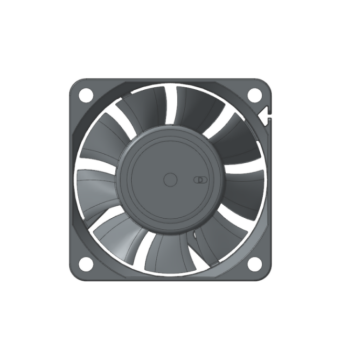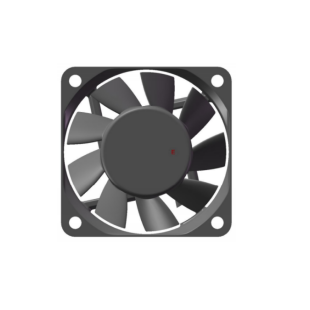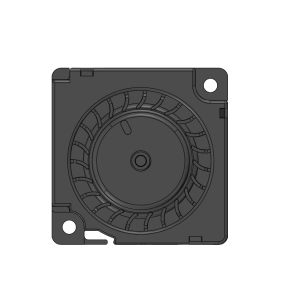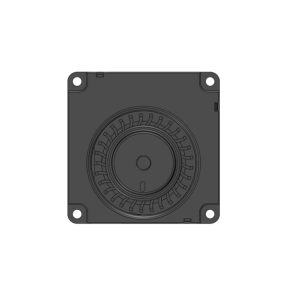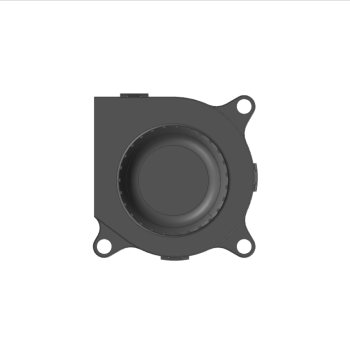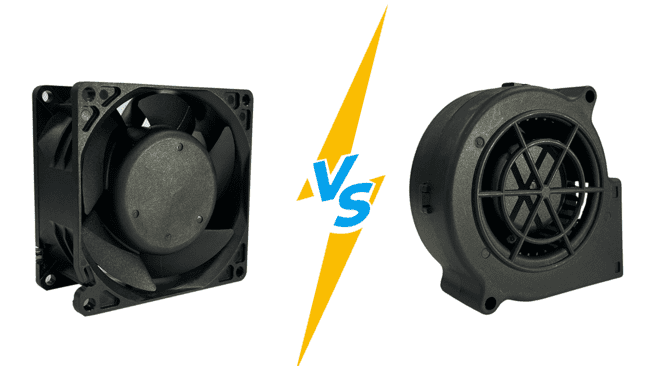Introduction
3D printing, as a technology that subverts traditional manufacturing, has attracted much attention in recent years.
By converting digital models into physical objects, 3D printing technology can quickly and accurately manufacture parts and products of various shapes and structures.
Therefore, it has been widely used in industrial design, medicine, architecture and many other fields, and is constantly promoting the development of these fields.
At the same time, the popularization of 3D printing also makes it easier for people to carry out customized production and personalized creativity, bringing huge business opportunities and social benefits.
Basic Overview of 3D Printing
Definition And Principle
3D printing is a manufacturing technique that builds physical objects by building up material layer by layer based on a digital model.
The technique is also known as additive manufacturing because it involves adding material to an object of increasing thickness until the desired shape is created.
3D printing can be used to create a wide variety of objects, from small parts to large components, and can use many different materials, including plastics, metals, ceramics, and so on.
Its principle is to convert the digital model into slices stacked layer by layer, and use computer-controlled machines or equipment to stack each slice layer by layer to finally form the desired object.
Specifically, firstly it is necessary to use computer-aided design software (CAD) to create or download a 3D model file.
Then, input the file into the 3D printer and set relevant parameters, such as printing material, printing layer thickness, etc.
Next, The 3D printer will divide the model into many thin layers, and stack the printing materials layer by layer according to the predetermined path.
When the printing is completed, it is necessary to remove unnecessary support structures and perform post-processing, such as polishing and painting to obtain the final product.
Different 3D printing technologies are different, but the basic principles are similar. Commonly used 3D printing technologies include: inkjet, UV curing, thermal fusion deposition, electron beam melting, laser sintering, etc..
3D printing has the following advantages against traditional manufacturing:
Objects of complex shapes can be manufactured: While traditional manufacturing methods require the use of molds or tools to manufacture objects of a specific shape, 3D printing can manufacture objects of any shape directly from a digital model without the use of additional molds or tools.
Low production cost: Traditional manufacturing methods require a lot of manpower and capital investment, while 3D printing requires only a small amount of materials and electricity, so the production cost is lower.
More flexible: Traditional manufacturing usually requires long-term preparation and adjustment, while 3D printing can be quickly produced as needed in a short period of time, and the model can be modified and optimized at any time.
Reduce waste and environmental pollution: traditional manufacturing usually requires cutting, grinding and other processes, which will generate a lot of waste, while 3D printing is manufactured layer by layer, which can minimize waste and reduce environmental pollution.
Personalization and small batch production can be realized: traditional manufacturing usually requires the production of large batches of standardized products, while 3D printing can be customized according to customer needs, and small batches of products can be produced in a short period of time.

3D Printing Development History
3D printing has seen remarkable growth and innovation since its inception. Let’s explore the significant milestones in the development history of 3D printing:
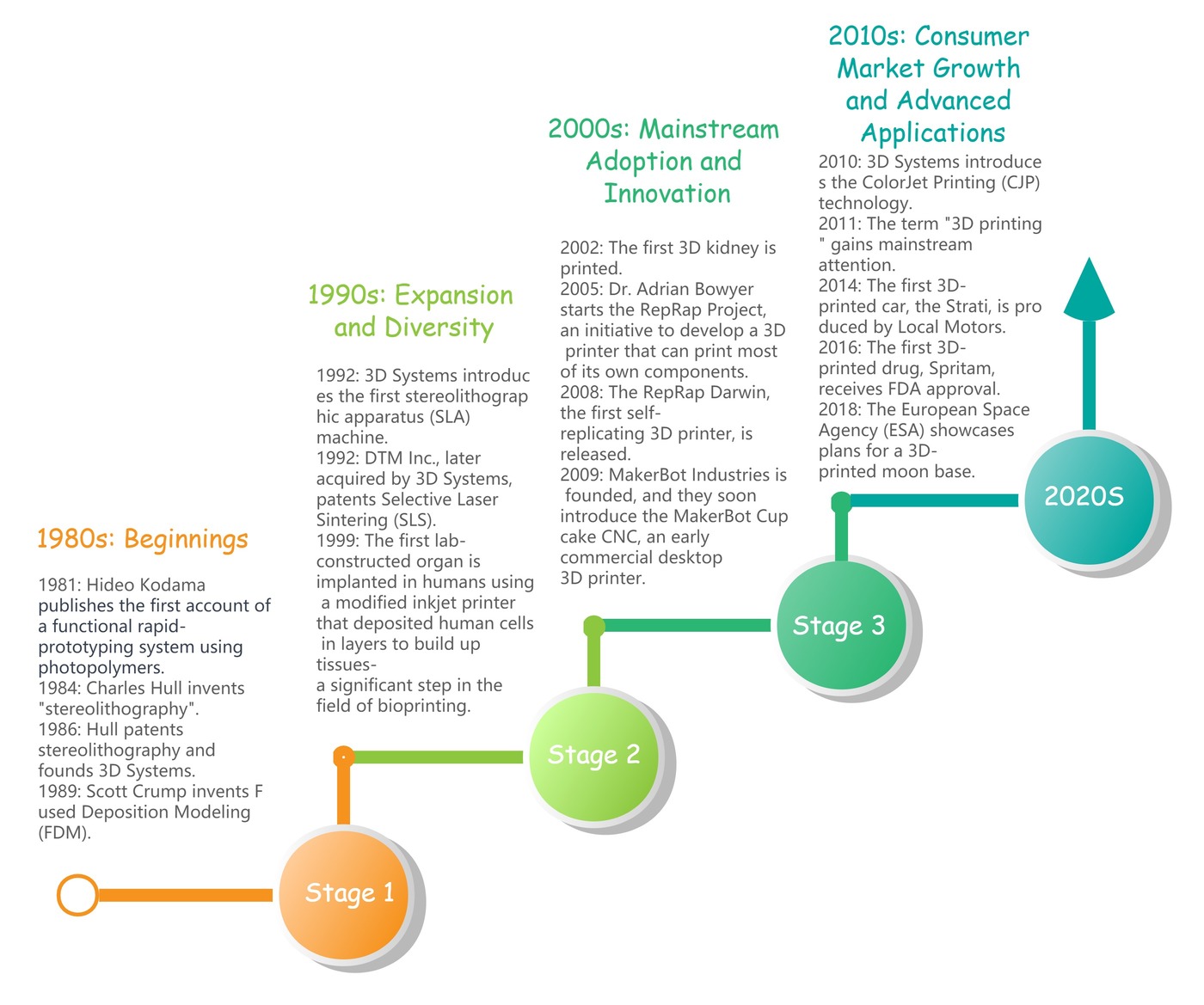
The growth of 3D printing has continued with innovations in materials, printing technologies, and applications across industries. With the rapid evolution of the technology, further advancements are expected in areas such as electronics, food, healthcare, and large-scale manufacturing.
The history of 3D printing showcases its transformative power, evolving from a niche prototyping solution to a technology with the potential to revolutionize how we manufacture, build and even approach healthcare and biology.
Applications
3D printing technology has a wide range of applications in various fields, such as manufacturing & tooling, automotive, aerospance & defense, medical & dental, consumer goods and electronics, fashion jewelry, ect.. From the following chart, 3D printing used in automotive and consumer goods & electronics are expected to get fast growth in the period of 2023-2028 with CAGR 24.3% and 21.8% repectively.

Source: RESEARCH AND MARKETS
Tooling & Manufacturing:
- Creation of custom manufacturing tools, jigs, or fixtures.
- Reducing lead time for producing tooling in industries.
Aerospace & Defense:
- Lightweight components for aircraft and spacecraft.
- Drones and UAVs.
- Prototyping and testing new designs.
Automotive:
- Prototyping new parts or designs.
- Production of end-use parts, especially for custom or luxury vehicles.
- Tooling and manufacturing aids.
Medical and Dental:
- Prosthetics: Custom-made prosthetic limbs and components.
- Dental: Custom dental implants, crowns, bridges, dentures, and orthodontic devices.
- Bioprinting: Experimental printing of living tissues for transplants or drug testing.
- Surgical Planning: Creating patient-specific 3D printed models for pre-operative analysis.
- Medical Implants: Custom implants, surgical tools, and fixtures.
- Hearing Aids: Nearly all modern hearing aids are now 3D printed.
Fashion and Jewelry:
- Custom jewelry and intricate designs.
- Experimental fashion items and accessories.
Architecture and Construction:
- Architectural model creation.
- Prototyping design elements.
- Experimental construction of housing elements or full structures using large-scale 3D printers.
Consumer Goods & Electronics:
- Customized consumer products like phone cases, accessories, and home decor.
- Prototyping and testing new product designs.
- Specialized electronic casings or components.
Prototyping:
- Rapid design iteration without the need for expensive molds or tooling.
- Testing and validation of design concepts.
Education:
- Hands-on learning tools for students.
- Teaching STEM concepts, including prototyping and design.
- Historical artifact replicas for study without risking original artifacts.
Art & Sculpture:
- Unique art pieces.
- Reproductions of existing artworks or historical artifacts.
Food Industry:
- Creating unique shapes or designs with edible materials like chocolate or dough.
- Experimental gastronomy.
Research & Development:
- Customized laboratory equipment.
- Prototyping new devices or tools.
Entertainment & Gaming:
- Props for movies or theatre.
- Custom board game pieces or miniatures.
Footwear & Sports:
- Custom orthotics and shoe designs.
- Sports equipment tailored to individual athlete’s specifications.
Marine:
- Producing replacement parts on ships.
- Prototyping new marine components.
3D printing, since its inception, has seen significant shifts in application trends, primarily driven by technological advancements, cost reductions, and increased acceptance across various industries.
3D Printing Market
Global 3D Printing Market Size
With the continuous progress of technology and the continuous expansion of application scenarios, the 3D printing market is projected to reach from USD 15 billion in 2023 to USD 34.5 billion by 2028, at a CAGR of 18.1%, with increasingly diverse application areas and trends.
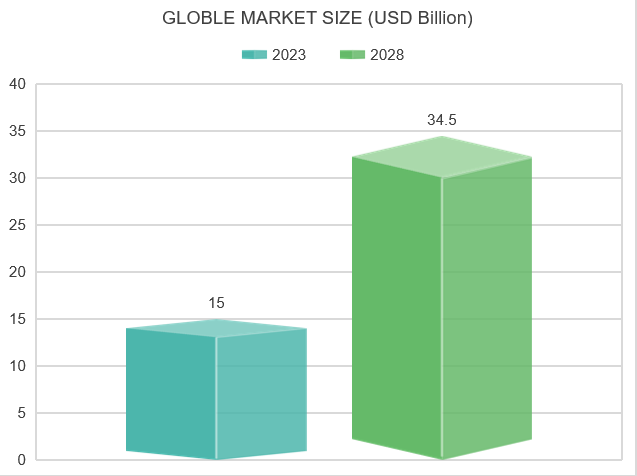
This figure also reflects the wide recognition and pursuit of 3D printing technology in countries and regions around the world, as well as the huge market potential.
3D Printing Market, by Region
3D printing market, by region, has been devided into North America, Europe, Asia Pacific, and others. North America is expected to account for the largest share of the 3D printing market, while the market in Asia Pacific is expected to grow at the highest CAGR 22.6% from 2023Y to 2028Y, mainly contributed by China.
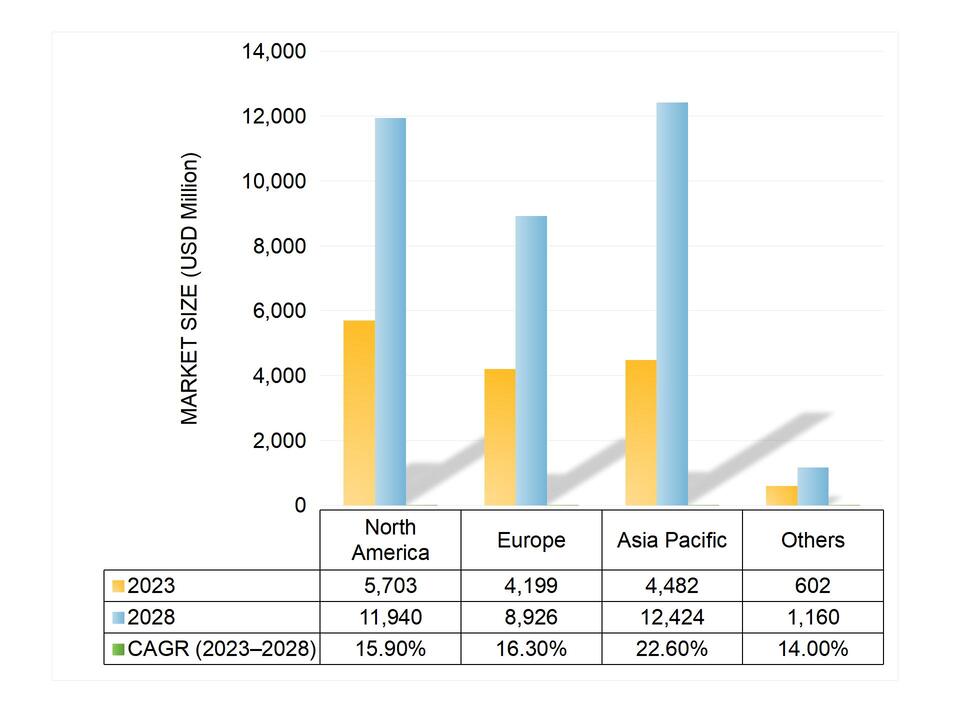
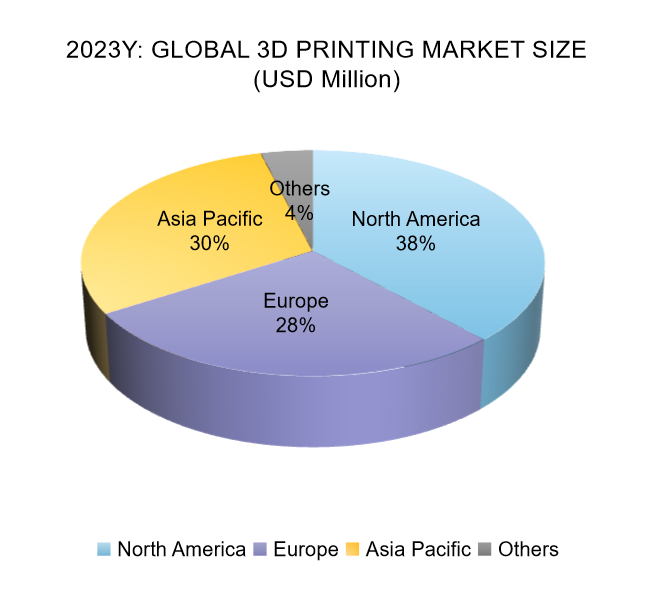
Source: RESEARCH AND MARKETS
North American 3D Printing Market Overview
North America accounted for the largest share of 38% of the 3D printing market in 2023, with the US
being a major contributor to the regional market.
Source: RESEARCH AND MARKETS
The United States, in particular, is a global leader in the adoption of 3D printing technologies, accounting largest share of 86% in total 3D printing market of Noth America. Canada and Mexico have also been increasing their investments and adoption of 3D printing technologies.
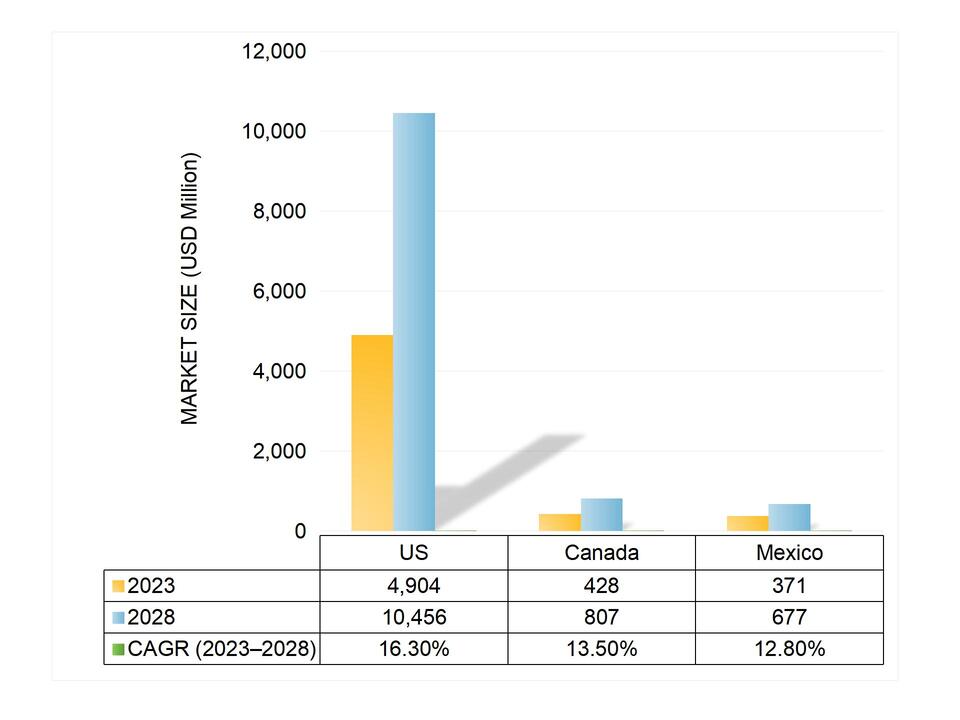
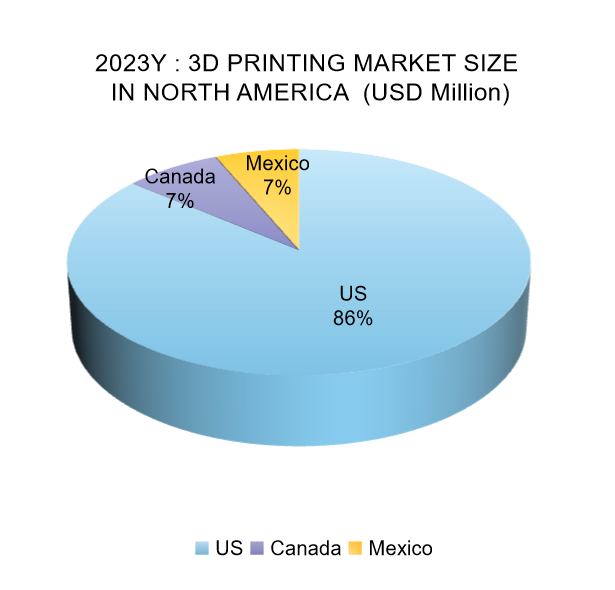
Source: RESEARCH AND MARKETS
Industry Adoption:
- Aerospace and Defense: These sectors have been among the earliest and most enthusiastic adopters of 3D printing in North America. Companies use 3D printing for prototyping, components manufacturing, and tooling.
- Healthcare: Hospitals and medical device manufacturers are employing 3D printing to create custom implants, prosthetics, dental devices, and even tissues and organs (bioprinting).
- Automotive: The automotive industry is using 3D printing for prototyping, tooling, and producing end-use parts.
- Manufacturing: More and more manufacturers are adopting 3D printing to produce complex components, which were previously difficult or costly to produce using traditional manufacturing methods.
Materials and Technology:
There has been continuous growth in the availability of high-performance materials, including metals, polymers, ceramics, and composite materials. These materials cater to various industrial applications, demanding high strength, temperature resistance, and durability.
New technologies are emerging, allowing for faster printing, higher precision, and larger build volumes.
Innovation and Research:
North America is home to many leading 3D printing companies and startups, as well as research institutions focused on advancing 3D printing technologies.
Regulatory Environment:
In sectors such as healthcare and aerospace, where safety and reliability are paramount, there has been significant attention to the regulatory framework around 3D printing.
Investments and Acquisitions:
The 3D printing industry in North America has been characterized by a significant amount of investment activity, both in terms of venture capital investments into startups and acquisitions by established players.
Challenges and Barriers:
Despite the rapid growth, there are challenges including intellectual property issues, equipment costs, material limitations, and the need for a skilled workforce.
In summary, 3D printing in North America is in a mature phase compared to many other regions, with widespread industrial adoption across various sectors. It continues to be a hotbed for innovation in 3D printing technologies, materials, and applications, driven by significant investments in R&D and a favorable business environment. However, challenges remain, including regulatory considerations, intellectual property issues, and the development of a skilled workforce.
Europe 3D Printing Market Overview
The 3D printing market in Europe has been segmented into Germany, France, the UK, Spain, Italy, and Others in Europe. Germany and the UK are the major countries contributing to the 3D printing market in Europe with CAGR 17.4% and 16.9% respectively and Germany gets largest market share 33% . The technique is widely used in the consumer goods, aerospace, automobile, and healthcare industries.

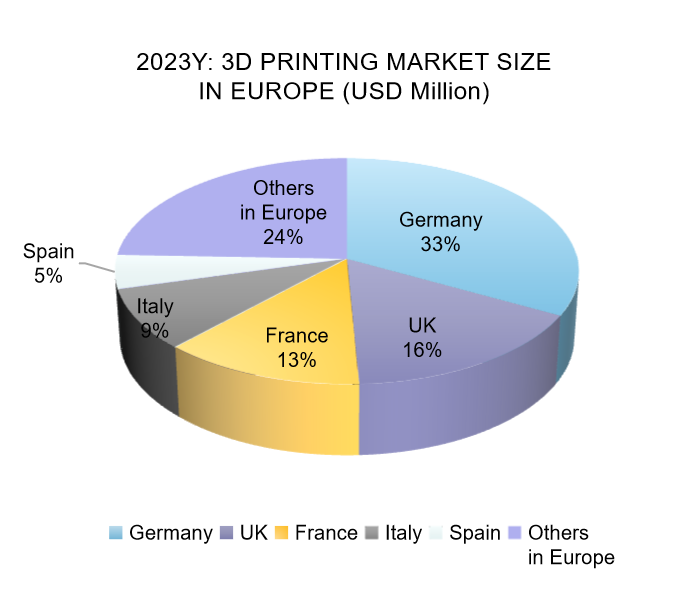
Source: RESEARCH AND MARKETS
Industry Adoption:
- Aerospace and Defense: European aerospace giants like Airbus have incorporated 3D printing into their manufacturing processes, mainly for component production and prototyping.
- Automotive: European car manufacturers, especially high-performance and luxury brands, have been early adopters of 3D printing for prototyping, tooling, and parts manufacturing.
- Healthcare: Europe has been at the forefront of using 3D printing for medical applications, including dental implants, surgical tools, prosthetics, and orthopedics.
- Fashion and Design: European designers and fashion houses have experimented with 3D printed garments, footwear, and accessories.
Research and Innovation:
Europe has numerous leading research institutions and universities focusing on advancing 3D printing technology. These institutions collaborate with industries to drive innovations.
Europe has seen a surge in startups and small-to-medium enterprises (SMEs) dedicated to various aspects of 3D printing, from printer manufacturing to specialized software solutions.
Regulatory Environment:
The European Union has shown interest in creating a standardized regulatory environment for 3D printing, especially in critical sectors like healthcare.
Public Initiatives and Funding:
The European Commission and individual countries have recognized the strategic importance of 3D printing. There have been funding initiatives, public-private partnerships, and collaborative projects to boost the adoption and innovation of 3D printing across the continent.
There’s also an emphasis on creating a Digital Single Market in the EU, which could further boost digital manufacturing technologies like 3D printing.
Collaboration and Networking:
Europe boasts several 3D printing networks, associations, and clusters, fostering collaboration and knowledge exchange. Examples include the European Association of the Machine Tool Industries (CECIMO) and various national additive manufacturing associations.
Trade Shows and Conferences:
Europe hosts some of the world’s leading 3D printing trade shows and conferences, like Formnext in Germany, which attracts global participants.
Sustainability:
European companies and institutions are actively researching the potential of 3D printing to contribute to circular economy principles, focusing on recyclable materials and waste reduction
Challenges:
Despite the progress, Europe faces challenges like fragmented regulations across countries, a need for more extensive standardization, and competition from other global players.
In summary, Europe holds a robust position in the global 3D printing landscape, driven by strong industry adoption, research prowess, and public initiatives. The region is likely to continue being a hub for innovation and application in the 3D printing domain, addressing its challenges and leveraging its strengths.
Asia Pacific 3D Printing Market Overview
The market in Asia Pacific has been devided into Japan, China, India, and Rest of Asia Pacific. The 3D printing market in Asia Pacific is expected to grow at the highest CAGR of 22.6% from 2023Y to 2028Y, with China being the major contributor with largest share of 53% in 2023Y.
- China: As one of the world’s manufacturing giants, China has aggressively adopted and invested in 3D printing technology. The government’s “Made in China 2025” initiative emphasized advanced manufacturing technologies, including 3D printing.
- Japan: With its emphasis on precision engineering and technology, Japan is a significant innovator in the 3D printing space, particularly in materials science and electronics.
- South Korea: The country has shown keen interest in integrating 3D printing into its established industries, including electronics and automotive.
- India: The market in India is expected to grow at the highest CAGR as it has huge potential in 3D printing applications. Although slightly lagging compared to East Asian counterparts, India has shown growing interest in 3D printing, especially in healthcare, automotive, and jewelry.
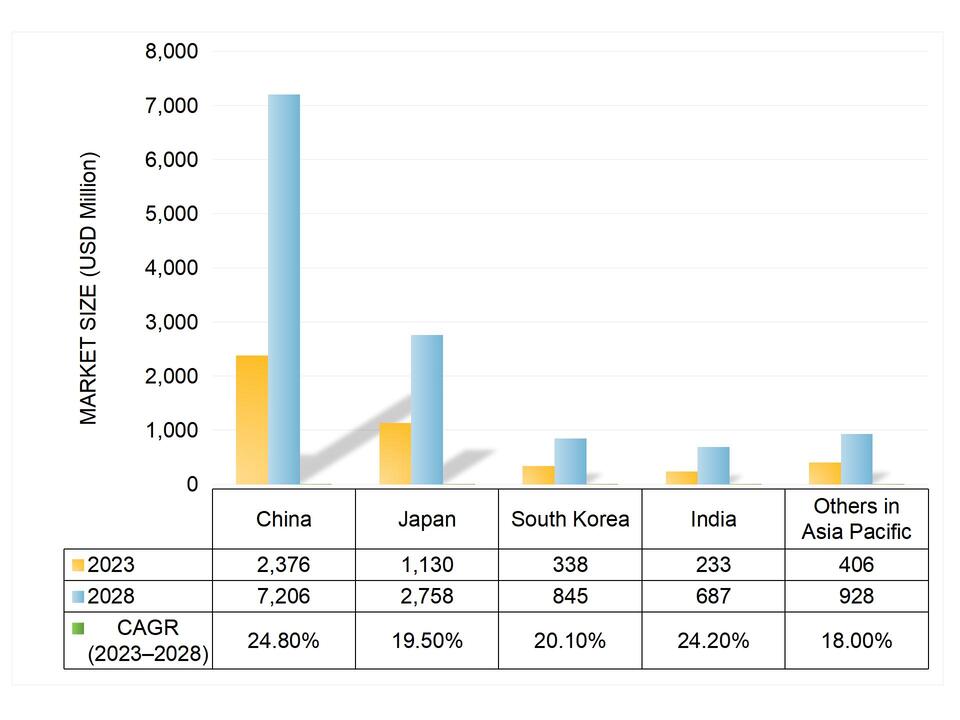
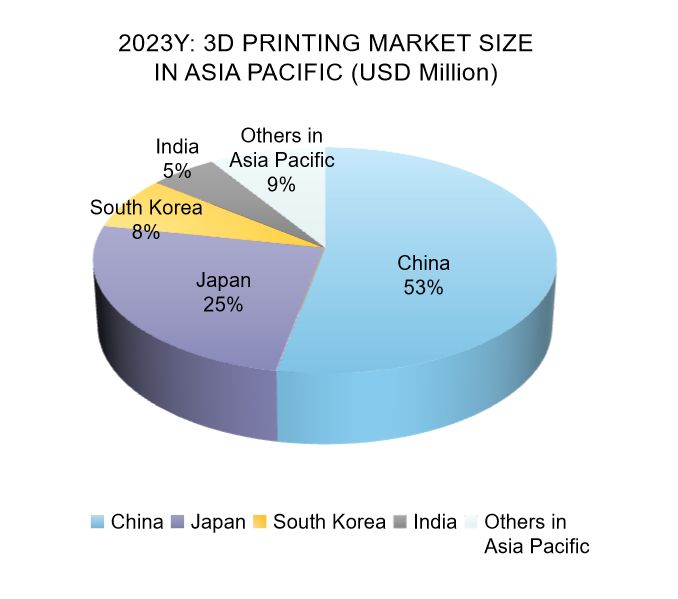
Source: RESEARCH AND MARKETS
Industry Adoption:
- Manufacturing: Countries like China have adopted 3D printing extensively in their manufacturing processes, driven by government initiatives to upgrade and modernize the sector.
- Healthcare: From dental aligners to prosthetics and surgical guides, 3D printing has seen steady adoption across the region’s healthcare sector.
- Automotive: Japan, South Korea, and China, with their strong automotive industries, are using 3D printing for prototyping and parts manufacturing.
- Aerospace: Countries with established aerospace industries, notably Japan and China, are leveraging 3D printing for component production and R&D.
Materials and Production:
The Asia-Pacific region has become a significant hub for the production of 3D printing materials, especially polymers and metals.
Public Initiatives:
Governments, especially in countries like China and Singapore, have initiated programs, funding, and research centers dedicated to advancing 3D printing technologies and their adoption.
Startups and Innovators:
The region has seen a surge in startups focused on various 3D printing aspects, from printer manufacturing to specialized applications in bioprinting and electronics.
Trade Shows and Conferences:
Asia-Pacific hosts several prominent 3D printing events, like TCT Asia in Shanghai, which serves as a platform for knowledge exchange and networking.
Challenges:
Despite the rapid growth, challenges like intellectual property rights, quality control, regulatory inconsistencies, and lack of skilled workforce are prevalent in the region.
In summary, the Asia-Pacific region, with its diverse economic landscape, presents a mix of mature markets and emerging opportunities in 3D printing. The combination of strategic investments, market demand, and innovation-driven initiatives positions the region for continued growth in the 3D printing domain.
Others 3D Printing Market Overview (Except for North American, Europe and Asia Pacific)
The market in the other region includes the Middle East, Africa, and South America. This region contributes a smaller share than the other regions to the global 3D printing market. The demand in Others is expected to increase in the distant future, with gradual developments in the 3D printing market in this region for materials.
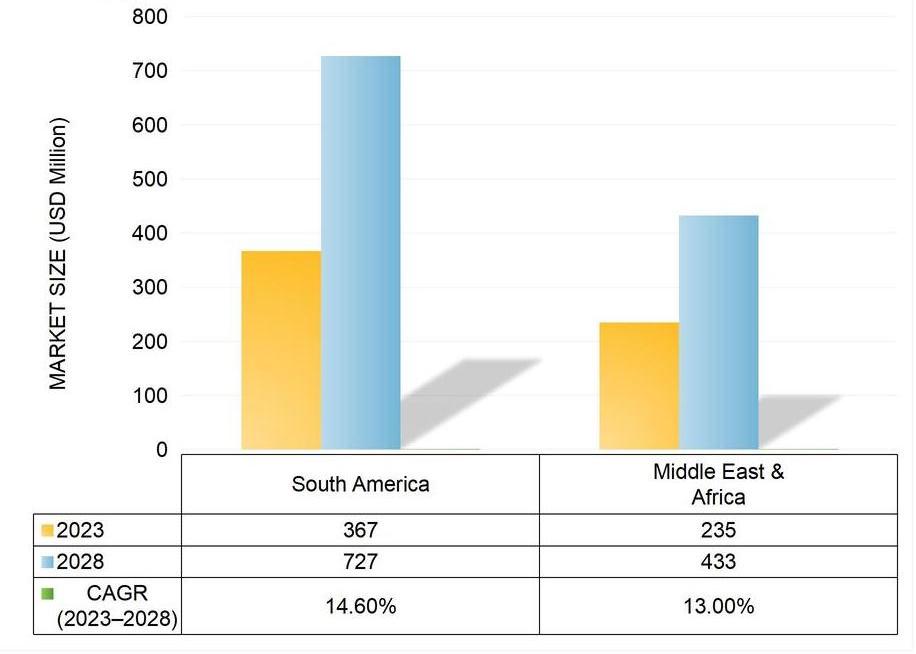
Source: RESEARCH AND MARKETS
South America:
- Growth Patterns: The adoption of 3D printing in Latin America has been gradual, with countries like Brazil, Argentina, and Mexico leading the way.
- Industry Adoption: The sectors showing interest include automotive, healthcare, and education. Brazil, in particular, has shown interest in aerospace applications.
- Challenges: Economic instability, regulatory hurdles, and limited access to cutting-edge technology have sometimes hampered growth. However, local manufacturing capabilities have been expanding.
- Innovation & Education: Universities and tech institutes in countries like Brazil and Mexico are introducing courses on 3D printing, fostering local innovation.
Middle East:
- Growth Patterns: The Middle East has been keen on integrating advanced technologies, including 3D printing, especially in the more developed nations like the UAE, Saudi Arabia, and Qatar.
- Industry Adoption: The construction sector has shown interest in 3D printed buildings and infrastructure. Healthcare, especially in regions with advanced medical facilities like Dubai, is also a notable adopter.
- Initiatives: The UAE, for instance, introduced the ‘Dubai 3D Printing Strategy’, aiming to make Dubai a hub for 3D printing by 2030, especially in construction, medical products, and consumer products.
- Challenges: The primary challenges include the need for skilled professionals and the relatively high initial costs associated with implementing advanced 3D printing setups.
Africa:
- Growth Patterns: Adoption in Africa has been slower compared to other regions, but there’s a growing interest in tapping into 3D printing to address local challenges.
- Industry Adoption: Healthcare stands out, with 3D printed prosthetics and medical devices offering affordable solutions. Additionally, 3D printing has been explored for local manufacturing to reduce dependency on imports.
- Innovation & Education: Startups and NGOs in Africa are using 3D printing for social impact, such as creating affordable housing or addressing medical needs in remote areas.
- Challenges: Limited infrastructure, economic constraints, and a lack of access to high-end technology are some of the hurdles. However, the potential for grassroots innovation using basic 3D printing setups is significant.
In summary, while regions outside of North America, Europe, and Asia-Pacific might not have the same level of industry maturity or adoption rates, they are uniquely positioned to harness 3D printing for localized solutions. As these regions continue to grow economically and technologically, the scope for the expansion of 3D printing is substantial. Local challenges, be it in healthcare, construction, or manufacturing, present opportunities for innovation using 3D printing technologies.
3D Printing Market, by offers
The complete market for 3D printing has been classified by printers, materials, services and software. Printers accounted for the largest share 36% of the total 3D printing market in 2023, followed by services and materials. 3D printing has gained exceptional attentions during the past decade due to the multiple advantages of 3D printers against traditional manufacturing processes. 3D printers offer a flexible and efficient approach to producing objects. They eliminate the need for specialized tools or molds, making them highly adaptable to a variety of designs. Being compact and increasingly affordable, they’re accessible to both professionals and hobbyists, facilitating on-site or at-home production. Their digital operation allows for easy design modifications, leading to less material waste. With a wide range of compatible materials available, 3D printers can cater to diverse needs. Additionally, their growing presence in educational institutions promotes hands-on learning and innovation. While they have transformative potential, the suitability of 3D printers depends on specific applications and desired outcomes.
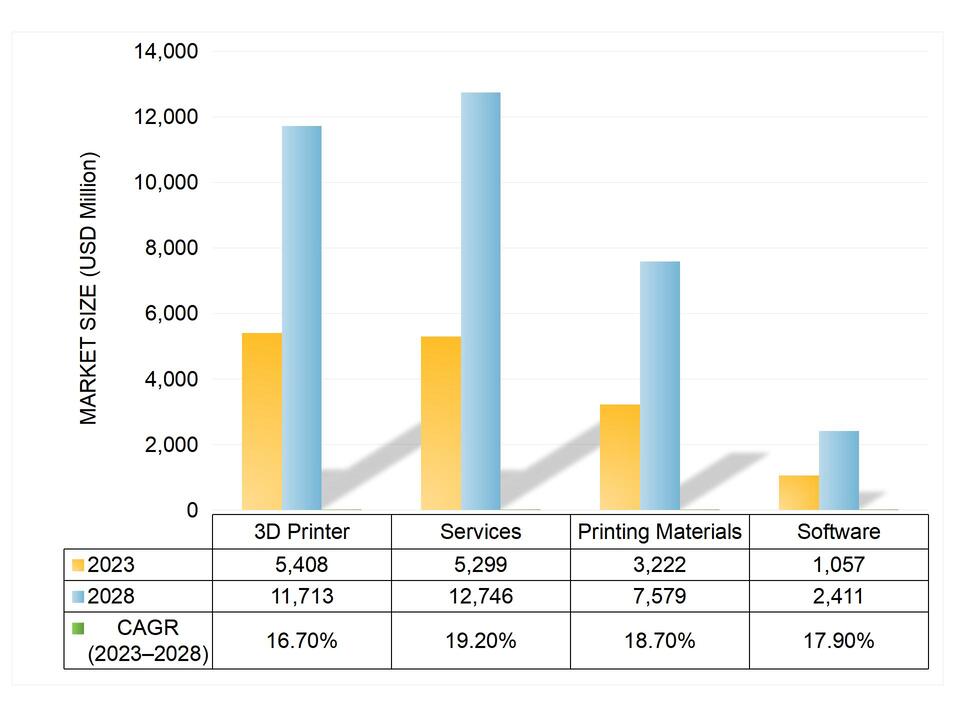
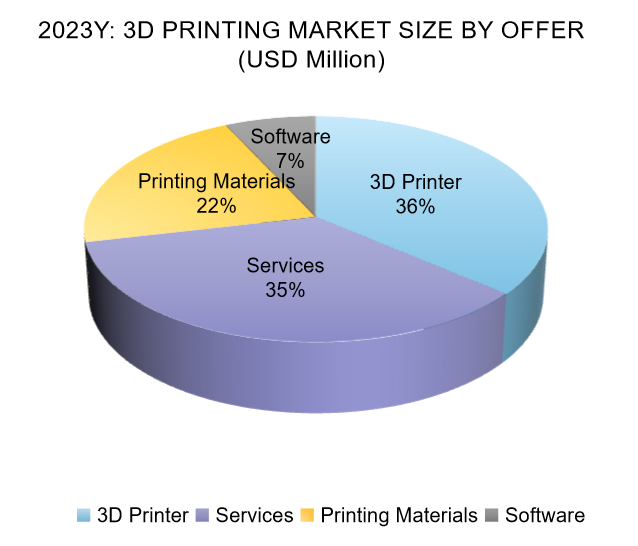
Source: RESEARCH AND MARKETS
3D Printing Market, by Offer: Printer
The 3D printing market, by printer type, is divided into desktop/personal printers and industrial/ commercial printers. Desktop printers are aimed at accessibility and simplicity for personal or educational use, while industrial printers focus on precision, versatility, and production efficiency for professional applications. Industrial printer gets higher CAGR comparing to desktop printer’s during 2023Y to 2028Y.,


Source: RESEARCH AND MARKETS
From the following chart, industrial printer accounts for pretty larger 3D printer market share of 81% in 2023Y with the advantages of high accuracy, material diversity, large build volume, post-processing intergration ect..
Source: RESEARCH AND MARKETS
Industrial/Commercial 3D Printers:
- Applications: These are used for professional applications, including manufacturing, aerospace, automotive, healthcare, and more.
- Price Range: These can range from tens of thousands to well over a million dollars based on their capabilities, size, and the technology employed.
- Common Technologies: This segment incorporates a wider variety of technologies, including Selective Laser Sintering (SLS), Stereolithography (SLA), Digital Light Processing (DLP), Selective Laser Melting (SLM), Direct Metal Laser Sintering (DMLS), and others.
- Brands: Key players include Stratasys, 3D Systems, EOS, GE Additive, and HP.
- Features & Improvements: There’s a continuous emphasis on achieving better precision, repeatability, and scalability. The introduction of multi-material printing, faster print speeds, and large build volumes are some of the notable advancements. There’s also an increased focus on software and process control to ensure consistency and quality in production settings.
- Metal 3D Printing: Within the industrial segment, metal 3D printing has been garnering significant attention. Companies like EOS, Desktop Metal, and Markforged have been pushing boundaries in this domain. The ability to print complex metal parts on-demand has transformative potential for industries like aerospace and medical implants.
Desktop/Personal 3D Printers:
- Popularity: These printers have become increasingly popular among hobbyists, educators, and designers due to their affordability and compact size.
- Price Range: The prices for these printers can range from a few hundred dollars for basic models to a few thousand for more advanced ones.
- Common Technologies: Fused Deposition Modeling (FDM) or Fused Filament Fabrication (FFF) is the most prevalent technology in this segment.
- Brands: Popular brands include MakerBot, Prusa, Creality, Ultimaker, and Anycubic, among others.
- Features & Improvements: Over time, these printers have incorporated features like dual extrusion, better print resolution, faster speeds, and improved user interfaces. Connectivity features such as Wi-Fi and integration with cloud platforms are also increasingly common.
Market Dynamics:
- Regional Growth: The Asia-Pacific region, in particular, has been witnessing a surge in demand for 3D printers, both in the personal and industrial segments. This is driven by growing manufacturing sectors in countries like China and India and supportive government initiatives.
- Trends: There’s an increasing move towards sustainability, with a focus on using eco-friendly materials. Additionally, the integration of Artificial Intelligence (AI) and Machine Learning (ML) with 3D printing processes is being explored for predictive maintenance, process optimization, and quality control.
- Challenges: The industry still faces challenges, including issues related to material standardization, intellectual property rights, and the need for skilled personnel.
DC fans used in 3D printer require high air flow and wide range of voltage. CCHV is leading DC fans manufacturer for 3D printer in China and have cooperated with Creality (China top 3D printer Brand) for years. Founded in 2006, led by experienced engineers from Taiwan fan companies, we have developed a full range of DC fans for 3D printer. Here, you can find the popular models as below,
3D Printer DC Axial Fans
 | 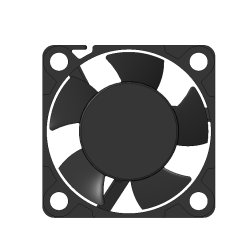 | 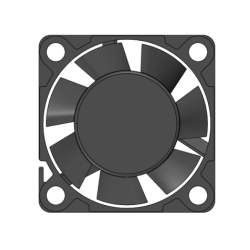 | 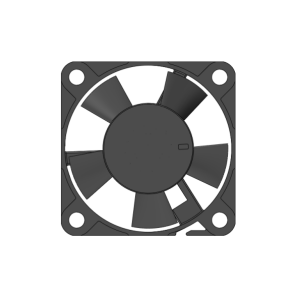 | 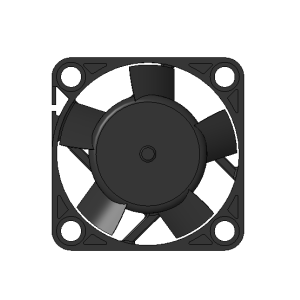 |
| 25x25x10mm Series A | 30x30x10mm Series A (5 Impeller) | 30x30x10mm Series A (7 Impeller) | 35x35x10mm Series B | 40x40x10mm Series A (5 Impeller) |
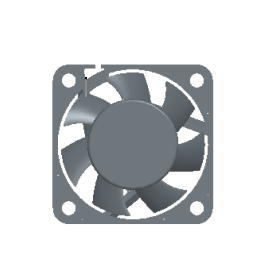 | 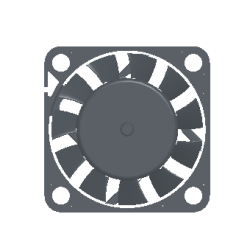 |  | 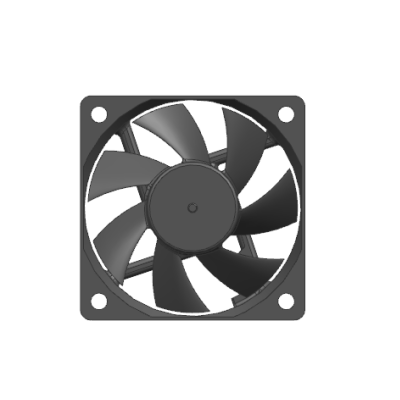 | 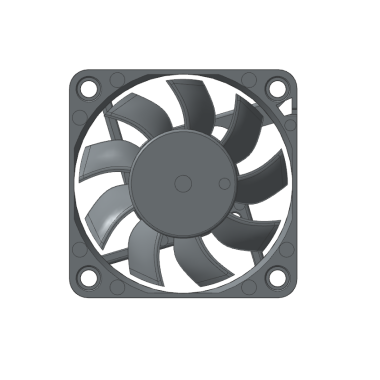 |
| 40x40x10mm Series A (7 Impeller) | 40x40x10mm Series A (11 Impeller) | 40x40x10mm Series G (7 Impeller) | 60x60x15mm Series B (7 Impeller) | 60x60x15mm Series C (9 Impeller) |
3D Printer DC Blower Fans
3D Printing Market, by Offer: Materials
The materials used in 3D printing are normally classified into four main groups: plastics, metals, ceramics, and other materials. Each material has unique properties and is used individually or combined with other materials to suit various applications. From the following chart, metals gets highest CAGR from 2023Y to 2028Y. However, metal is the most expensive materials in the group, which is normally used in high-end industries such as aerospace & defense, medical, and automotive.
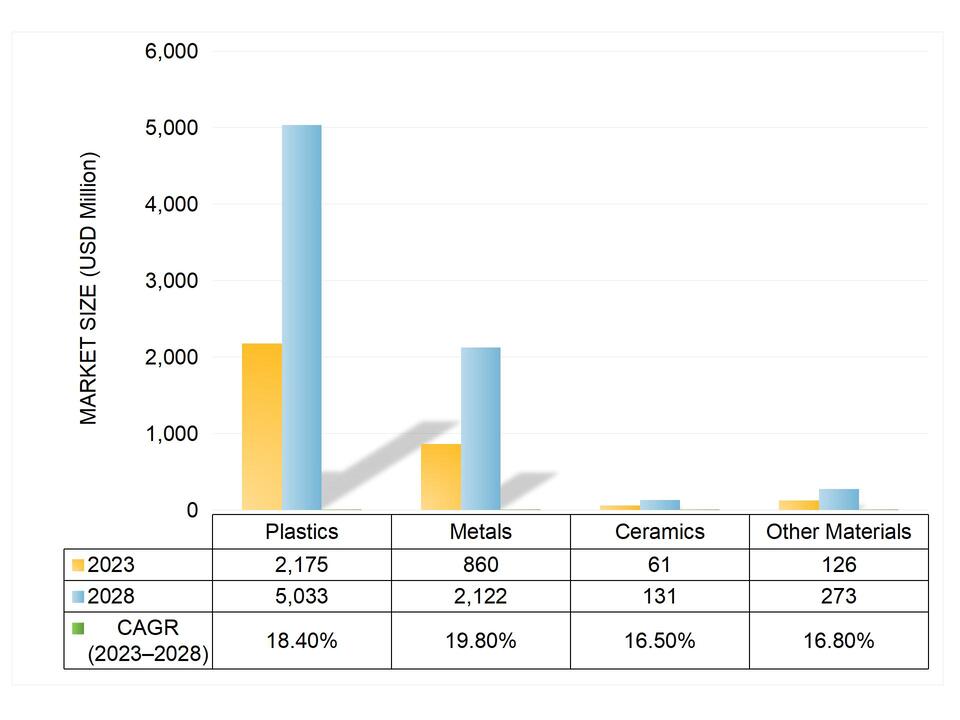
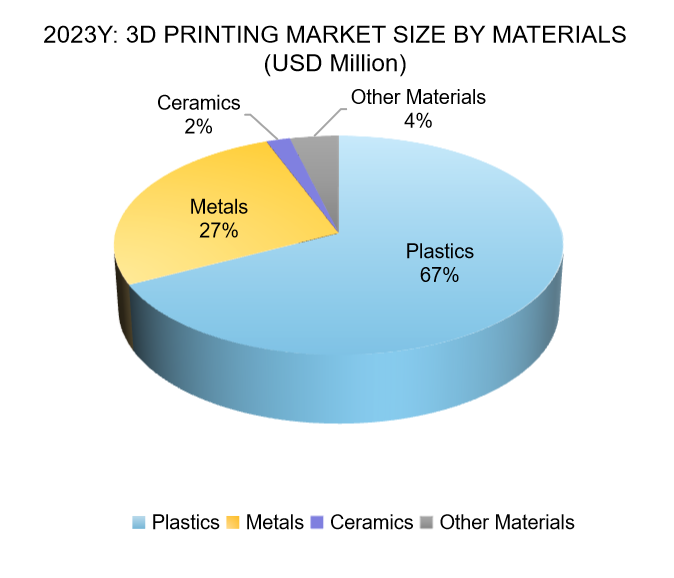
Source: RESEARCH AND MARKETS
From the following chart, plastics account for large share of 67% in the total 3D printing materials in 2023Y due to their versatility, ease of processing, and cost-effectiveness. Their adaptability for a broad range of applications, combined with early adoption in the 3D printing industry, has reinforced their prominence. Additionally, their suitability for consumer and desktop 3D printing, which demands safety and accessibility, further cements their dominant position. Lastly, plastics offer advantages in terms of lightweight properties, ease of post-processing, and efficient printing speeds.
Source: RESEARCH AND MARKETS
Plastics:
3D printing predominantly utilizes thermoplastics and photopolymers. Thermoplastics, like PLA, ABS, and PETG, are popular due to their versatility. PLA is biodegradable, ABS is durable, and PETG offers a balance between strength and clarity. On the other hand, photopolymers are light-sensitive resins that solidify under specific light wavelengths, ideal for high-detail prints in resin-based 3D printing techniques. Each of these materials caters to specific applications based on the required output properties and chosen 3D printing technology. From the following chart, you can see thermoplastics is expected to get higher CAGR of 19.8% than photopolymers from 2023Y to 20238Y with 59% market share in 2023Y in total 3D printing plastics.
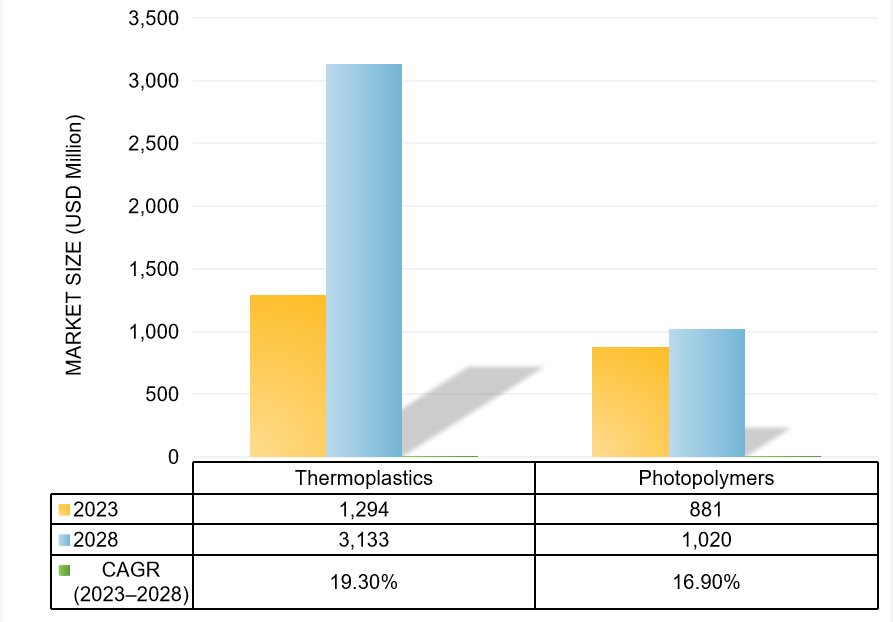

- Thermoplastics: A type of polymer that becomes pliable or moldable when heated and solidifies upon cooling. Unlike thermosetting plastics, which undergo a chemical change when heated and cannot be remelted, thermoplastics can be repeatedly melted and cooled without undergoing any significant chemical change. This characteristic allows them to be easily recyclable. FDM/FFF printers mostly use thermoplastics. Common ones include:
- PLA (Polylactic Acid): Biodegradable and derived from renewable resources like corn starch or sugarcane.
- ABS (Acrylonitrile Butadiene Styrene): Stronger and more heat-resistant than PLA, commonly used in consumer goods.
- PETG (Polyethylene Terephthalate Glycol): Known for its clarity and bridging properties between PLA and ABS.
- TPU (Thermoplastic Polyurethane): Flexible and elastic material.
- Photopolymers: Light-sensitive resins that solidify or cure when exposed to specific wavelengths of light, typically ultraviolet (UV) light. They are mainly used in resin-based 3D printing techniques, such as Stereolithography (SLA), Digital Light Processing (DLP), and masked stereolithography (MSLA). These are resins that cure when exposed to UV light.
Metals:
In 3D printing, metals have gained prominence for industrial applications due to their strength and durability. Commonly used metals include titanium, steel, aluminum, and precious metals like gold and silver. Techniques like Direct Metal Laser Sintering (DMLS) and Selective Laser Melting (SLM) are employed to produce high-resolution parts, especially for aerospace, automotive, and medical sectors. Using metals in 3D printing allows for complex geometries, reduced waste, and tailored mechanical properties, making them invaluable for advanced manufacturing needs. From the following chart, you can see that steel accounts for largest share of 33% in total 3D market metals in 2023Y.


Source: RESEARCH AND MARKETS
- Titanium: Commonly used in aerospace and medical applications.
- Stainless Steel: For general industrial parts.
- Aluminum: Lightweight and strong, popular in automotive and aerospace.
- Precious Metals: Gold and silver are used for jewelry and some electronics applications.
- Nickel Alloys: Used in high-temperature applications, especially in aerospace.
Ceramics:
In 3D printing, ceramics are employed for specialized applications due to their unique properties such as high temperature resistance, biocompatibility, and electrical insulation. Using techniques like lithography-based ceramic manufacturing (LCM) and binder jetting, complex and intricate ceramic parts can be produced. The adoption of ceramics in 3D printing is especially prominent in the medical field for dental restorations and bone scaffolding, as well as in the electronics industry for producing specific components. The ability to 3D print ceramics has expanded design possibilities and enabled the creation of structures previously challenging with traditional manufacturing methods.
- They are used in specific applications like dentistry (crowns) and some art/jewelry projects due to their hardness and heat resistance.
- Ceramic 3D printing remains a niche but is growing, especially in high-end and specialized markets.
Others, including Composites, Bio-materials and Other Specialized Materials:
Composites:
- Materials that combine the properties of two or more materials. For instance, carbon fiber or glass fiber composites infused in a polymer base can be 3D printed to achieve strength and lightness.
Bio-materials:
- This category has seen burgeoning interest for medical applications.
- Hydrogels: Used in bioprinting to create scaffolds.
- Living Cells: Pioneering work is being done in tissue engineering to print organs or tissue replacements.
- Bone-Like Materials: For orthopedic implants.
Other Specialized Materials:
- Conductive Filaments: For electronics and circuitry.
- Magnetic, Glow-in-the-dark, or Color-changing Filaments: For specific niche applications.
Market Dynamics:
- Demand Growth: As the adoption of 3D printing grows in sectors like aerospace, automotive, and healthcare, the demand for high-performance materials (especially metals) has seen a surge.
- Innovation and Research: There’s continuous research to develop materials with better mechanical properties, durability, and special characteristics.
- Sustainability: The push for greener materials is evident, especially with the increased use of biopolymers and recycled materials.
- Price Dynamics: As the production scales up and more players enter the market, the prices for some of the standard materials have been reducing. However, specialized materials, especially certain metal powders, can still be relatively expensive.
3D Printing Market, by Offer: Software
In the realm of 3D printing, software plays an essential role in bridging the gap between design and physical realization. CAD (Computer-Aided Design) tools allow for the creation and modification of digital 3D models. Once designed, slicing software divides these models into layers, generating the necessary machine instructions (G-code) for specific 3D printers. Simulation software helps in predicting potential print failures, optimizing print settings, and reducing material waste. As the 3D printing industry has grown, the demand for specialized software with advanced features, such as topology optimization and lattice generation, has also risen, facilitating more intricate designs, efficient production, and improved end-product performance.
Design Software:
- CAD (Computer-Aided Design) Tools: These are the primary software tools where most 3D designs begin. Popular CAD tools in the 3D printing community include Autodesk Fusion 360, TinkerCAD, SolidWorks, and Rhino.
- Free vs. Paid: While there are several professional-grade paid software solutions, the market has also seen a rise in free or open-source tools catering to hobbyists and beginners.
Slicing Software:
- This software converts 3D models into instructions that 3D printers can follow. They slice the model into layers and generate the path the printer will follow.
- Popular slicers include Cura, PrusaSlicer, MatterControl, and Simplify3D.
- Features like supports generation, layer height customization, and infill patterns have become standard.
Simulation Software:
- Before actual printing, simulation software can predict how the printer will build the layers and help identify potential problems.
- This is especially crucial in industrial settings where material wastage and errors are costly. Examples include Autodesk’s Netfabb and ANSYS Additive Print.
Printer Control and Monitoring Software:
- Tools like OctoPrint allow users to control and monitor their 3D printers remotely, often offering webcam integration for visual monitoring.
- These solutions often come with features like real-time adjustments to printer settings, print queue management, and more.
3D Scanning and Photogrammetry Software:
- Used to convert physical objects into digital 3D models. Tools like Agisoft Metashape and Autodesk’s ReCap can generate 3D models from photographs, while dedicated scanning solutions often come with their proprietary software.
IP Protection and File Security:
- As 3D printing becomes more mainstream, there’s an increasing focus on protecting intellectual property. Solutions are being developed to watermark, encrypt, or otherwise secure 3D models to prevent unauthorized replication or use.
Cloud-Based Platforms:
- Platforms like 3DPrinterOS and Tinkerine Suite offer cloud-based solutions for managing multiple 3D printers, user access, and streamlining the workflow.
Market Dynamics:
- Integration: There’s a trend towards integrating different software functionalities into unified platforms, simplifying the workflow.
- AI and Machine Learning: Incorporating AI can help in optimizing designs, predicting print failures, and even automating certain design processes.
- Customization: As industries adopt 3D printing for specific applications, there’s a demand for software customized to cater to niche requirements, like dental, jewelry, or aerospace-specific solutions.
3D Printing Market, by Technology
3D printing, or additive manufacturing, encompasses a variety of technologies, each suited for specific materials and applications. Fused Deposition Modeling (FDM) extrudes thermoplastic filaments layer by layer, making it popular for prototypes and consumer products. Stereolithography (SLA) and Digital Light Processing (DLP) utilize UV light to cure photopolymer resins, offering high-resolution outputs. Direct Metal Laser Sintering (DMLS) and Selective Laser Melting (SLM) are metal-based techniques, using laser beams to fuse metal powder layers. Meanwhile, Binder Jetting deposits a binding agent onto powder beds, allowing for full-color prints and versatile material choices. As technology progresses, these methods are continually refined, expanding the possibilities of 3D printing across industries.
SLS, SLA, MJP and FDM are the most widely used 3D printing technologies.
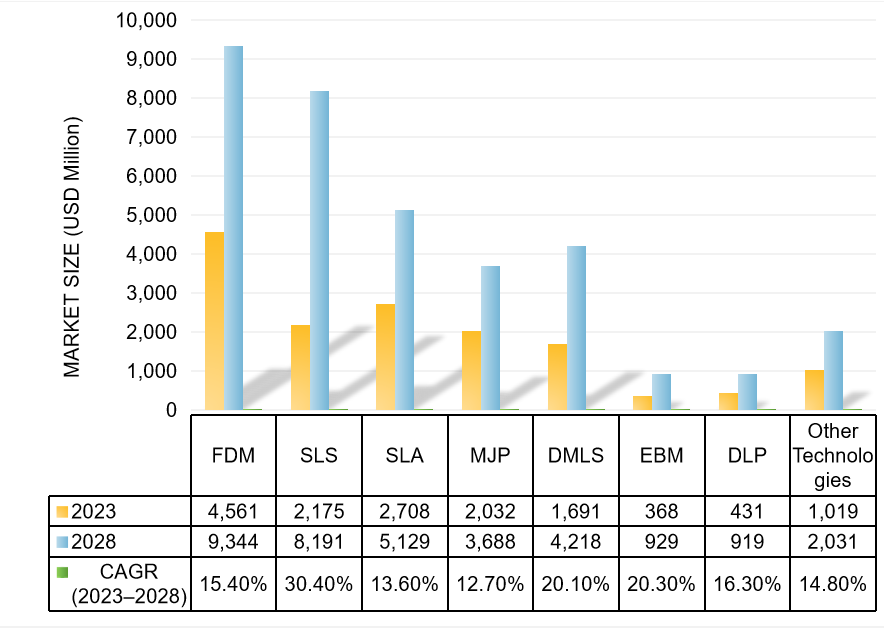
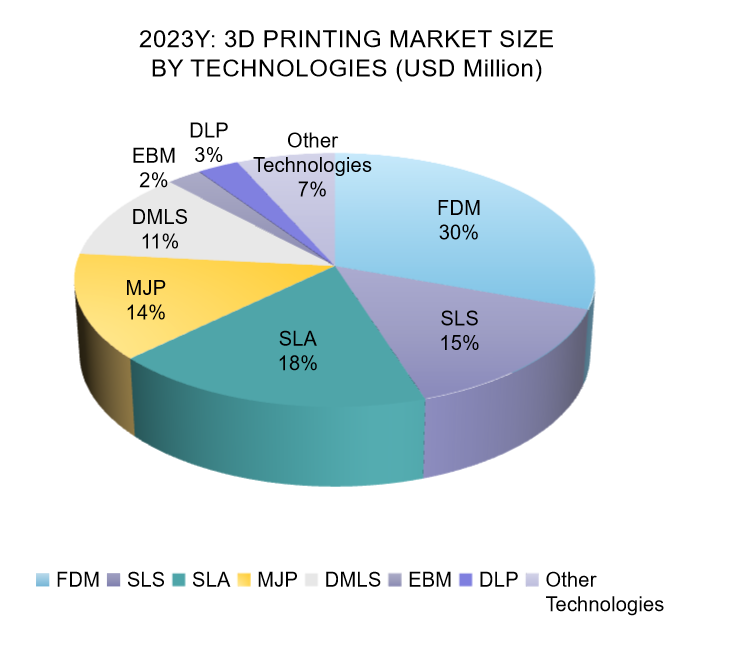
Source: RESEARCH AND MARKETS
FDM (Fused Deposition Modeling) / FFF (Fused Filament Fabrication):
- Process: A thermoplastic filament is heated and extruded through a nozzle, depositing material layer by layer.
- Materials: PLA, ABS, PETG, TPU, and more.
- Applications: Prototyping, educational models, household items, and toys.
- Pros: Relatively low cost, wide range of materials, user-friendly.
- Cons: Limited resolution compared to some other methods, visible layer lines.
SLA (Stereolithography):
- Process: Uses a UV laser to cure and solidify a liquid resin in a vat, layer by layer.
- Materials: Photopolymer resins.
- Applications: High-detail models, jewelry, dental, and prototypes requiring smooth surfaces.
- Pros: High resolution and detail.
- Cons: Brittle materials, requires post-processing (cleaning and UV curing), more expensive than FDM.
DLP (Digital Light Processing):
- Process: Similar to SLA but uses a digital light projector screen to cure the entire layer of resin at once.
- Materials: Photopolymer resins.
- Applications: Jewelry, dental models, and other high-detail applications.
- Pros: Fast layer curing, high resolution.
- Cons: Limited build size, materials can be brittle.
SLS (Selective Laser Sintering):
- Process: Uses a laser to sinter powdered material, binding it together layer by layer.
- Materials: Nylon, polyamide, and more.
- Applications: Functional parts, complex geometries, production parts.
- Pros: No need for support structures, durable parts.
- Cons: Expensive, post-processing often required to achieve smooth finish.
DMLS (Direct Metal Laser Sintering):
- Process: Similar to SLS but for metals. Melts metal powder layer by layer.
- Materials: Stainless steel, titanium, aluminum, and more.
- Applications: Aerospace, medical implants, high-stress engineering.
- Pros: Produces strong metal parts, complex geometries possible.
- Cons: Very expensive, requires post-processing like heat treatment.
EBM (Electron Beam Melting):
- Process: Uses an electron beam to melt metal powder layer by layer.
- Materials: Titanium, cobalt chrome, and more.
- Applications: Aerospace, medical.
- Pros: High-density parts, good mechanical properties.
- Cons: Expensive, limited material selection.
MJF (Multi Jet Fusion):
- Process: Uses a multi-agent printing process to selectively apply fusing and detailing agents, which are then fused by heating.
- Materials: Polyamides (Nylons).
- Applications: Functional parts, complex designs, production parts.
- Pros: Fast, high-detail, strong parts.
- Cons: Limited to specific materials.
Other Technologies (Binder Jetting & Material Jetting):
Binder Jetting:
- Process: A liquid binding agent is selectively deposited to join powder particles.
- Materials: Metal, sand, ceramic.
- Applications: Metal parts, molds for casting, decorative items.
- Pros: Can print in full color, no supports needed.
- Cons: Parts may require post-processing or infiltration for added strength.
Material Jetting:
- Process: Drops of material are selectively deposited and cured.
- Materials: Photopolymers.
- Applications: Multimaterial prototypes, medical models, full-color models.
- Pros: High resolution, multi-material printing.
- Cons: Expensive, materials can be brittle.
These are the primary technologies, but innovations are ongoing, and new processes and variations are continually emerging. Each technology has its strengths and weaknesses, making it more suited to certain applications over others. When choosing a technology, considerations often include material properties, required resolution, cost, and intended application.
3D Printing Market Insights
The world of 3D printing, once a niche segment of the manufacturing industry, has evolved into a dynamic and transformative force reshaping how products are designed, manufactured, and distributed. The market’s growth trajectory reveals the robust versatility of additive manufacturing across a plethora of sectors, from healthcare to aerospace, fashion, and beyond.
Diverse materials, ranging from thermoplastics to metals and ceramics, have enabled applications previously deemed unattainable. Moreover, the software ecosystem’s evolution, optimizing designs and ensuring print reliability, further underscores the industry’s maturity.
Based on the market size ananlysis, we can get some market insights which can help to you better know the 3D printing development.
- Automotive and consumers goods get highest growth rate of 24.3% and 21.8% respectively from 2023Y to 20238Y.
- US accounts for largest market share in 3D printing and China is expected to get highest growth rate from 2023Y to 2028Y (see the chart as below).
- 3D printer is expected to get largest market share of 36% in 3D printing by offers in 2023Y, followed tightly by service (35%), and industrial 3D printer gets pretty largest share of 81% in printer types.
- Plastics in 3D printing materials gets largest market share of 67% in 3D printing by materials in 2023Y and thermoplastics gets 59% in 3D printing plastics comparing to 41% of photopolymers.
- SLS, SLA, MJP and FDM are the most widely used 3D printing technologies.

Source: RESEARCH AND MARKETS
Market insights suggest a future where additive manufacturing is not just an alternative but a primary mode of production, driven by its unparalleled customization capabilities, sustainability advantages, and cost efficiencies. As innovations surge, and as industries increasingly adopt these methodologies, the 3D printing market is poised for exponential growth. This growth will not only impact the industrial landscape but will usher in a new era where designs are limitless, and production is localized and democratized.
CCHV is top 3D printer DC Fans in China. Founded in 2006, led by experienced engineers from Taiwan fan companies, we have developed a full range of high performance DC Axial Fan from 15mm to 220mm and DC Blower Fan from 120mm-120mm which should perfectly meet your needs in 3D printer industry. For more information, please click 3D Printer application.

